Osteopathic Medicine
What Is Osteopathic Medicine?
Andrew Taylor Still, MD founded Osteopathic medicine in 1892 at Kirksville, Missouri. Still was dissatisfied with the medical practice of his time. He proposed Osteopathic Medicine as an improvement to medical practice.
Working over many years, Still created a new system of medicine combining ancient truths with the medical practice of his time. Central to his philosophy was a strong dislike of careless use of medications – which at that time included swallowing mercury and many other toxic substances. He also advocated the use of Manipulative Therapy that he discovered and practiced over many years. Although considered a maverick by many, he became known as a great healer and synthesizer of medical thought.
We may learn much through a closer look at the unique philosophy and practice of Osteopathic Medicine.
Andrew Taylor Still, MD did not conceive of Osteopathic Medicine as a non-medical school of medicine. Rather, Still wanted Osteopathic Medicine to improve all of medicine. Central to Osteopathic Medicine is the use of Manipulative Therapy. Is Osteopathic Medicine unique only in its stand on Manipulative Therapy or is there more to know regarding improving medical care? We will benefit from a closer look at Osteopathic philosophy to examine its merits.
The term Osteopathy confuses many people, doctors and patients alike. Many confuse “Osteopathic” with “Orthopedic,” as in Orthopedic Surgeons. To add to this confusion, some DOs also are Orthopedic Surgeons. What is the origin of the term Osteopathy?
We cannot separate Osteopathic philosophy from its founder: Andrew Taylor Still, MD. Still coined the term Osteopathy from the Greek words Osteo meaning “bone” and Pathos meaning “something wrong with.” Osteopathy thus translates as “something wrong with the bones.” Still knew that beginners in Manipulative Therapy lack the subtle hands-on skill of trained and experienced Osteopathic Physicians; using the bones as landmarks made Manipulative Treatment easier to explain and teach.
For example: locating the kneecap is something nearly anyone can do with little training. More skill is needed to read the meaning of tissue texture, muscle tone, and fluid dynamics. This is why bones are only landmarks in a vastly more complex system of hands-on diagnosis and therapy. Who was Dr. Still and how did he come up with his ideas?
Andrew Taylor Still, MD (1828-1917) was a rough-hewn frontier doctor of the American Midwest. Still was a keen observer of life and studied nature from an early age. He had a strong desire to help others that led him to a career as a physician.
Medicine at that time was primitive by today’s standards. There were few reliable pharmaceuticals of any kind. Surgery was limited and hospitals were rudimentary and scarce. That is why medical care outcomes were very poor by today’s standards. Like all settlers of the frontier, Still often witnessed advanced disease and death – and developed a strong desire to improve medical practice.
Dr. Still’s father was an MD physician and Methodist minister. Still’s father worked as a Circuit Rider for the Methodist Church; he both preached and practiced medicine as he travelled through the area by horseback. It is not surprising that Still chose to study medicine, attending the College of Physicians and Surgeons in Kansas City, Missouri before the outbreak of the American Civil War.
Still took a strong stand against slavery. He backed his convictions by leaving medical school to serve in the Union Army – first as a Captain, and later as a Major. As was common in his day, he completed his medical training after the war by studying with doctors already in practice.
In the spring of 1864, Still lost three children to meningitis. This personal tragedy persuaded him to seek a higher order of medicine. Still committed himself to study the structure and function of the human body. He carried out extensive dissection work on human cadavers and experimented on himself with Manipulative Therapy. Still wrote: “A thousand experiments were made with bones, until I became quite familiar with the bony structure.”
By 1874 his ideas were ready for presentation to the medical world, and he began writing about them. In 1892 Still founded a new school of medicine: the American School of Osteopathy at Kirksville, Missouri. The practical application of Still’s original system of medicine focused on Manipulative Therapy to restore health, but his ideas went far beyond hands-on work.
A short synopsis of Still’s ideas follows:
- The human body is a unit. If one part of the body becomes structurally impaired, all the body suffers.
- We can better understand disease if first we understand health.
- The body’s musculoskeletal system forms a structure that – when disordered – disturbs the function of other parts of the body.
- The human body is subject to mechanical strain.
- The ability of the body to adapt itself to environmental change is the essence of health.
- There is within the human body a capacity for health. We can recognize this capacity and work with it to normalize the body and restore health.
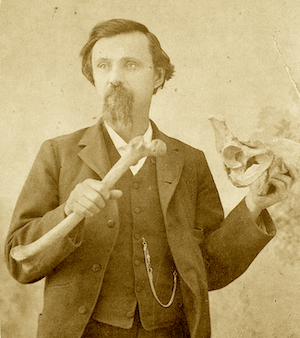
Andrew Taylor Still, M.D Teaching.

The first Osteopathic College building.

The American School of Osteopathy.
Andrew Taylor Still, M.D. sought a major reformation of American medicine.
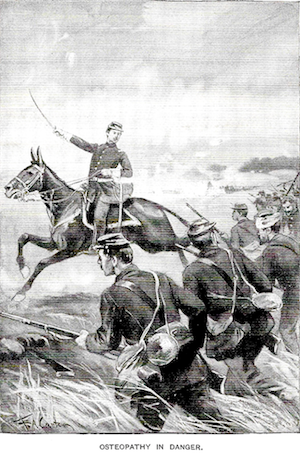


The human body is a unit. If one part of the body becomes structurally impaired, all the body suffers.

I suggest that Still's "capacity for health" is none other than SELF-REFERRAL - and MAXIMUM HEALTH will result from optimizing SELF-REFERRAL.
Osteopathic Theory Connects Stress and Disease.
Dr. Still Taught the Unity of Body Structure and Function. Still wrote that mechanical stress and strain interrupts health. And that interruption is what creates disease. “We say disease when we should say effect,” Still wrote. “Disease is the effect of . . . a change in the parts of the physical body. Disease in an abnormal body is just as natural as is health when all parts are in place.
Still identified Future Shock nearly a century before Alvin Toffler. He noted that people in primitive cultures seldom fall victim to the stress of life. Still clearly taught that the stress of civilized living wreaks havoc upon the body. He wrote in his 1899 Philosophy of Osteopathy:
“If you burst a boiler by high pressure or otherwise, your engine ceases to move. And just the same of an over-worked brain or body.”
Finally, Still was firm that Manipulative Therapy could restore health. Osteopathic theory assumes that the body has a natural ability to maintain health, and thus avoid disease. Still identified tense muscles – caused by stress – as a major root cause of all disease. Manipulative Therapy, he maintained, simply restores the body’s ability to maintain health. Removing obstructions to health was clearly Osteopathic Medicine’s goal. Still wrote: “Harmony only dwells where obstructions do not exist.”

The bones and muscles are key landmarks in verifying health or defining disease.
Stress impacts the bones and muscles by disrupting normal alignment through abnormally tightened muscles.
When the body is distorted this way, SELF-REFERRAL begins to fail. Disease is the natural result.
Normalizing a distorted body restores SELF-REFERRAL and thus is key to moving toward MAXIMUM HEALTH.
Bone and Muscle Work Together to Create Health and Normal Movement.
When we look at the human body, its structure is highly dense. There are many individual parts that work closely together that function as a single unit. The skeleton is unique because it acts as a physical mechanical framework for the body to stand and move in a gravitational environment. How is it that bone and muscle work together to resist the pull of gravity and allow us to maintain posture and move about?
Muscles work with bone throughout the body, making up over 60% of the body’s lean body mass. Muscles connect with bone, other muscles, or connective tissue. They are band-like and can do two things: they can contract, or pull toward their center, getting shorter; or they can relax, settling into their resting state and getting somewhat longer. When a muscle contracts, it pulls what they are attached to together. When they relax, the same parts naturally separate as the muscle loosens.
We can easily demonstrate this to ourselves using an arm. When we move the wrist toward the shoulder, the biceps and related muscles are contracting. Likewise, when we drop the wrist, the muscles relax to allow this to happen.
Muscles work this way all over the body. Some muscles are working if we stand still and maintain posture. Other muscles work to allow us to walk or run. Muscles of the face allow us to communicate through facial expressions. Other muscles help us to speak. No matter what movement we point to, muscles are working with bone to make it happen.
Still clearly taught that the brain was in relationship with the rest of the body via the spinal cord, segmental nerves, and cranial nerves. His fixation with maintaining proper relationship of anatomy parts, one with another, was to insure there was no obstruction in information flow between brain and body. All obstructions in flow would degrade the brain’s ability to govern the body. This is the basis of breakdown in SELF-REFERRAL.
In computer terms, the spine and all nerves of the nervous system act as the Input/Output ports for the brain as the Central Processing Unit. When the brain is getting accurate information from the body, it correctly evaluates the body’s situation and can accurately correct imbalances. If the brain cannot get accurate information, errors are made and body management deteriorates – resulting in disease.
At first the idea of tight muscles causing disease seems far-fetched. Then we look at how the nervous system is organized and connected. We naturally look closely at the spinal column. That is because the brain is connected to the body first through the spinal cord at the center of the spinal column. The connections go from there to all the organs and tissues of the body via the segmental spinal nerves exiting the spinal cord and cranial nerves that connect directly from brain to body. This creates a communication and control system that exactly corresponds with our computer analogy.
Tracing out the destinations of all the brain to body connections has been thoroughly studied and established. Today this is all basic medical school curriculum. The adjacent diagrams clarify these connections. It is Still’s contention that the basis of disease lies in interruptions in brain and nerve communication.
When Osteopathic Physicians examine patients, they are looking for evidence of abnormally tight muscles. These tight muscles often follow the distribution of the segmental spinal nerves, although they can include any part of the body. D.O.s call these patterns of tight muscles Somatic Dysfunction. Somatic Dysfunction is named for the part of the body where it is found.
Osteopathic Physicians use a complex system of manual treatment to correct Somatic Dysfunction wherever it is found. This is called Osteopathic Manipulative Treatment. OMT is effective in treating Somatic Dysfunction. Many focus on its effectiveness in relieving pain that is otherwise intractable – but OMT helps nearly any medical condition because it treats the underlying derangement of brain-body communication.




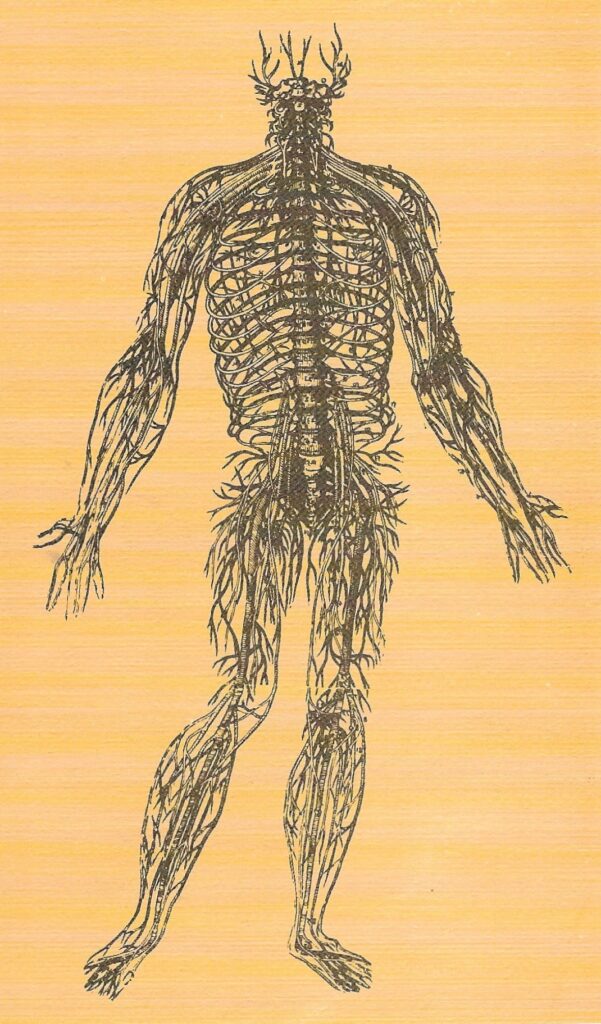


Another victim of Somatic Dysfunction is fluid dynamics throughout the body. For example, when the heart muscle becomes weak and unable to move the blood to maintain circulation, we often see signs of fluid problems. Findings include swelling about the ankles or difficulty breathing due to fluid accumulation in the lungs.
A similar problem is created by Somatic Dysfunction, as tight and sore muscles often feel boggy to the touch. This is because the same nerve that controls muscle contraction also controls the arteries that supply blood to the muscle. The tight muscles also prevent the veins and lymphatic channels from draining waste products via the circulation. If untreated, the resulting tissue congestion will affect surrounding nerves and tissue, spiraling down into more and more problems.
is a more subtle aspect to the degraded circulation caused by Somatic Dysfunction. Still attached great importance to the cerebrospinal fluid, or CSF.
The CSF is a clear, colorless fluid that is made inside the brain and bathes the brain, spinal cord, and nerves. Conventional medicine teaches that this fluid system acts as a shock absorber to protect delicate nervous tissue from injury. It also teaches that CSF bathes and cleanses the brain, spinal cord, and nerves.
Still taught that CSF had a role beyond that of bathing and protecting the nervous system’s tissues; he taught that the CSF circulated throughout the body, as blood flows through the arteries and veins.
Still wrote in his Philosophy of Osteopathy:
” . . . the cerebrospinal fluid [CSF]is the highest known element that is contained in the human body, and unless the brain furnishes it in abundance a disabled condition will continue. He who is able to reason will see that this great river of life must be tapped, and the withered field irrigated at once, or the harvest of health will be lost”.
Still here suggests that CSF has a trophic or nourishing effect on body tissues; that is, the CSF delivers substances to all tissues that are necessary for health. Still also wrote of the CSF as an active cleanser of tissue. He wrote
“. . . to withhold the supply from a limb, to wither away would be natural . . . for want of supply (hunger), and the burdens of dead deposits along nerve centers…the nerve fiber to its place is king and lord over all.”
The spine acts as the main support structure that holds the body erect and makes movement possible. The spine and spinal nerves also act as a distribution system connecting the brain with the body that allows communication both directions. Distortion of anatomy by Somatic Dysfunction thus disrupts CSF and related fluids.
Testing Still's Ideas: Osteopathic Research Has Produced Strong Results for Decades.
The Osteopathic profession grew from the outset based on the success it enjoyed helping people. That is, sick and suffering people went to DOs and got improvement with their health problems, word spread, and the DOs became more and more successful. This was in the era before new medical ideas were expected to be proved by scientific research before they were applied in medical practice.
By the 1940s the scientific model of demanding proof for claims of medical theories came into practice. The Osteopathic profession, which by that time had enlarged to multiple schools and presence of DOs in the majority of states, worked in a focused and dedicated fashion to implement research that would demonstrate the ideas of Still and their effectiveness in medical care. While DOs had used X-Ray from the time of Still forward to prove postural imbalance, this did little to validate Osteopathic theory and practice. A more focused approach was needed.
One of the most important names in Osteopathic research is Dr. J. Stedman Denslow. Dr. Denslow had a strong interest in Structural X-Ray. He used elaborate equipment and imaging techniques to prove that accurate X-rays could be taken to prove variations of posture based on position of skeletal parts compared with known level and square references in the X-ray picture. His work did much to prove that such studies could be used to document Somatic Dysfunction in a reliable fashion.
Denslow next turned his attention to examining the specific local effects of Somatic Dysfunction. He designed and worked with elaborate electric and electronic equipment to study what DOs found with their hands. He was able to demonstrate Somatic Dysfunction as a measurable disturbance in muscle and related tissue at the vertebral joint. That is the junction of one vertebra with another. That is where the segmental spinal nerves emerge to connect with other parts of the body. These connections are critical to Osteopathic theory as shown in previous illustrations above.
Dr. Denslow soon joined forces with a Physiology PhD. – Dr. I. M. Korr. They took Denslow’s work farther by proving that the Somatic Dysfunction shown by X-Ray correlates with the electronic findings of Denslow’s probes, thus connecting abnormal structure with abnormal physiologic function of nerve and muscle.
Korr continued the work, adding new probes taped to the patient’s back that recorded electrical activity in muscles of the spine and back. He was able to prove that where the Somatic Dysfunction was found by probes, the patient was found to have disease predicted by the diagrams showing the nerve destination.
Between the work of Denslow and Korr, the existence of Somatic Dysfunction was proven by scientific methods. It is visible via X-ray studies taken under controlled conditions. It is verifiable by measuring the electrical activity of stressed spinal muscles verified by sensors. Patterns of Somatic Dysfunction correlate with health history of disease in organ systems that connect with the verified Somatic Dysfunction. All that is quite persuasive, but what about Still’s claim of nerves nourishing the tissues with trophic or feeding factors necessary for health?
In the later part of his career, Dr. I. M Korr took the challenge of studying the subject of trophic influence of nerves to tissue. He published a series of articles that proved that CSF did circulate within the nerve sheaths of all nerves, and they did deliver chemical substances to the tissue that were not coming from other sources.
In one of his better-known experiments, Dr. Korr severed the nerve connections to half of a dog’s tongue. Once the dog healed, he injected imaging material into the nerves that would terminate in the tongue. The side of the tongue that had normal nerve connections lit up on imaging while the tongue that had no nerve connections did not receive the injected substance. This proved that the nerves do in fact have circulatory function, and if tissue somehow loses that nerve connection they will not receive what the nerve brings to the tissue by way of the nerve circulation.
We see that a multitude of serious scientific research has proven the ideas first proposed by Dr. Andrew Taylor Still in the nineteenth century. There is so much research that duplicates and proves all this that there is not enough space on this or any other Website to list it all. Those who claim that there is no scientific proof for Osteopathic ideas taught by Dr. Andrew Taylor Still and his successors are poorly informed. Many today claim “there should be scientific studies done to verify these claims.” There have been strong scientific studies with clear results from the 1940s to the present. Every decade that passes offers nothing but more proof and validation of Dr. Still’s theory and its practical application to medical practice.

Structural X-Rays Clearly
Demonstrate Somatic Dysfunction.

Dr. J. Stedman Denslow establishing the link between somatic dysfunction and abnormal nerve conduction.

Dr. Denslow joined Dr. I. M. Korr to study patterns of somatic dysfuntion.

Dr. Denslow and Dr. Korr proved the relationship between somatic dysfunction, abnormal autonomic nerve function, and end organ disease.

Dr. Korr carrying out surgery to sever the nerve connections to one side of a dog’s tongue to study nerve trophic activity.

Microscopic study after surgery shows tongue severed from nerves (a) has not received chemically tagged substances from the nerves – but tongue with intact nerves continued to receive tagged substances (b). As Dr. Still predicted, tissue with bad nerve connection is swollen and boggy.
A Major Solution for the Opioid Crisis.
Pain in the back and elsewhere is a major force driving the Opioid Crisis. People go from doctor to doctor seeking relief. They often fail to find relief for their pain so they can get back to a normal life. People with major pain often turn to Opioids – either prescription or otherwise.
One of the most common problems doctors confront daily is patients with back and related pain. Dr. Still commented on how foolish it is to fail to identify and treat the problem of Somatic Dysfunction underlying the pain. He stated, “When a cat gets his tail caught in a door, don’t say ‘poor kitty’ or try to appease its pain by petting it. Open the door and turn it loose! You are Osteopaths, and thus get at the cause.”
There is more than pain relief in consideration here. One of the most tragic and truly massive problems we face today is the Opioid Crisis. The vast majority of those impacted by it are patients who have back or other pain that destroys their ability to function. They end up taking strong painkillers and often become addicted to them. The resulting deterioration in their quality of life, destruction of families, and consequences of criminal behavior are truly devastating. That is why every patient needs access to Osteopathic Manipulative Treatment.
Treating the whole person as opposed to just the small problem that brings them to the doctor is a hallmark of Osteopathic Medicine. DOs have a way of seeing the whole person and not just the current complaint. They also have the Health Approach as opposed to the Disease Approach to medical practice. They are more open to the possibility of moving you toward MAXIMUM HEALTH.
Effective Service to Others Drives Strong Professional Growth


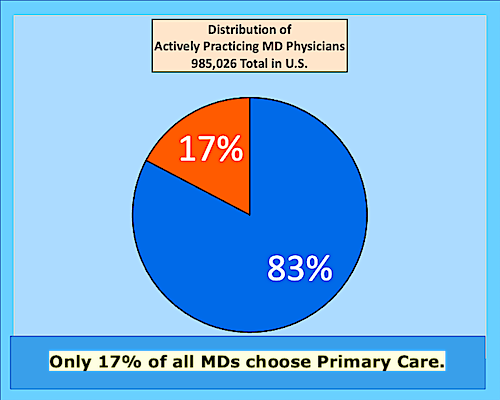
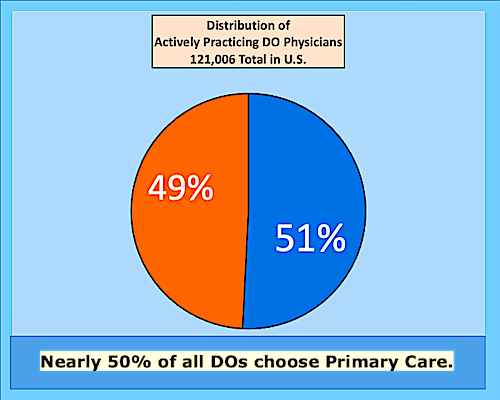
The Osteopathic profession has grown vastly since 1892. There are now 38 colleges of Osteopathic Medicine in the United States graduating over 6,000 students per year. Osteopathic Medicine in the United States is a complete school of medicine and surgery but maintains its unique Osteopathic philosophy and practice.
The numbers of Osteopathic physicians has grown enormously through the years, and continues to grow aggressively. The total number of DOs in active practice nearly doubled between 1990 and 2005. The number increased by 65% between 2005 and 2019.
American DO graduates practice the full range of medicine. This includes full medical diagnosis; X-ray, MR, and CT imaging; laboratory testing, prescribing medications, hospital-based patient care, and treatment by surgery. DOs often choose to become Family Physicians. They also can specialize in any area of medicine, including surgery, internal medicine, psychiatry, orthopedic surgery, pediatrics, or any other medical specialty.
As of 2019, there were 864,020 MD physicians and 121,006 DO physicians in the United States. That means 12% of American doctors are DOs and 88% are MDs.
A specific contribution to medical practice is the overwhelming commitment of DOs to providing primary care to the public.Current figures show nearly 50% of DOs choose primary care as opposed to only 17% of MDs. This focus on Family Medicine is in perfect alignment with the Osteopathic philosophy of treating the whole person. This by definition is the Health Approach to medical care as opposed to the Disease Approach. The focus is on moving toward MAXIMUM HEALTH as opposed to just slapping a band-aid on the current problem.
Finally. Osteopathic medicine teaches and uses Manipulative Therapy, while MD medicine does not. There are no other schools of medicine that teach Manipulative Therapy as part of Modern Medicine. It is the Osteopathic position that manipulative medicine should be available to every patient seen in the doctor’s office. The Osteopathic profession is equipped to do just that.
Relating all this to the SELF-REFERRAL/MAXIMUM HEALTH story, what we call Somatic Dysfunction is essentially a focused interruption of the body’s SELF-REFERRAL. The delicate nerve tissue that allows the brain to get accurate information from the body to the brain is disrupted. In addition, the brain has problems getting accurate orders to the body because of blockages in SELF-REFERRAL. Communication from body to brain is severely disrupted, as is communicaiton from brain to body.
While people with pain of bones and muscle appreciate the relief they get from Osteopathic Manipulative Treatment, there is a much more important aspect to this: OMT RESTORES SELF-REFERRAL. By reading through this Website, you should know by now that normal SELF-REFERRAL creates MAXIMUM HEALTH – the superior state of health that everyone wants. OMT corrects deep-seated effects of Stress and restores the body’s ability to communicate with itself. Huge blockages to SELF-REFERRAL are removed when OMT is applied. These are the corrections needed to create MAXIMUM HEALTH.
For more information on Osteopathic Medicine Contact:
The American Osteopathic Organization is the D.O. equivilent of the American Medical Association. This organization is a good place to start to learn more about the Osteopathic Profession.
The American Academy of Osteopathy is the organization of D.O.s focused on Osteopathic Manipulative Treatment. They can help you find the best manipulating physicians for specific problems.


